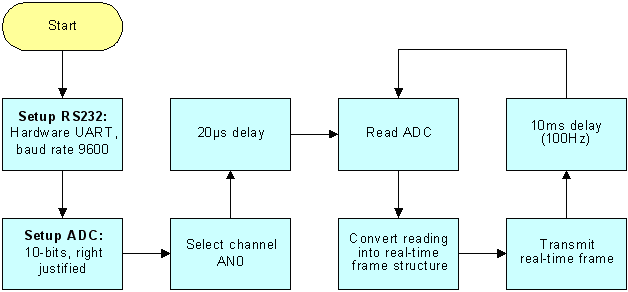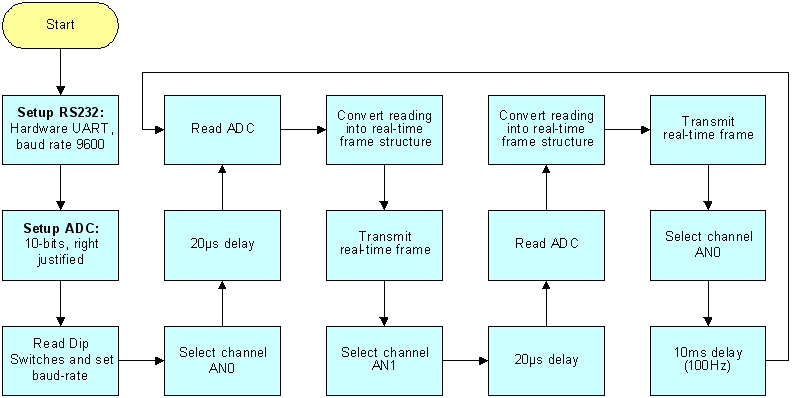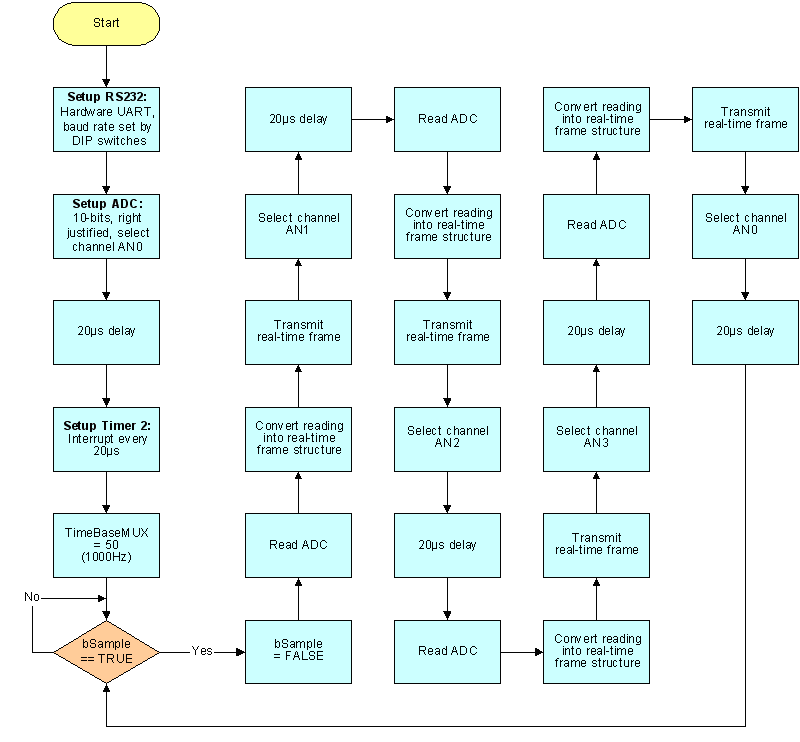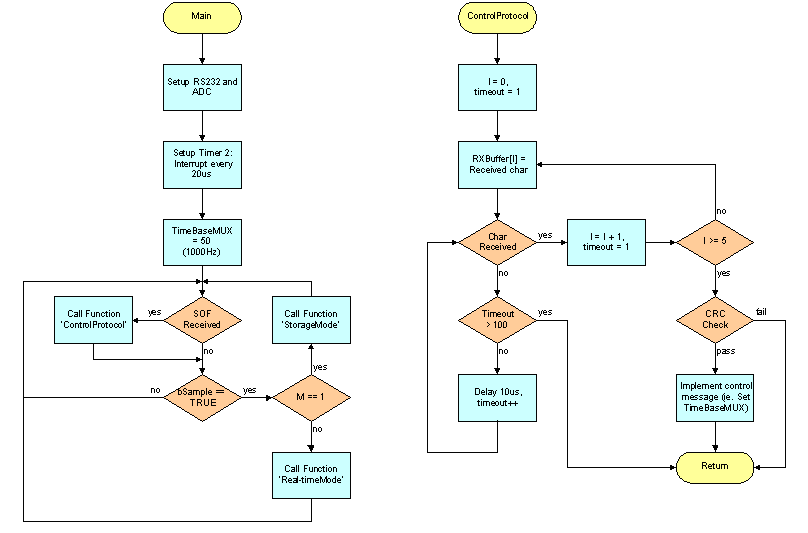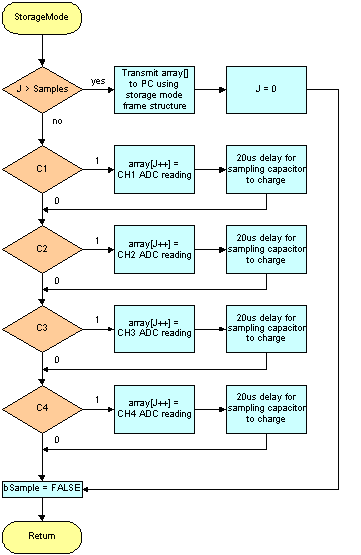|
|
|
|
10.0. PIC Software Development |
|
The philosophy used during the development of the PIC code was to keep it simple, straightforward, comprehensible, and to a minimum. There are many small programs designed for testing the hardware and ideas, each program is labelled mark 1, 2, 3, etc… The end result is that the PIC code is gradually built up step-by-step, instead of writing the entire program at once. This ensures that operational results are obtained, as testing producers are carried out at each stage, while if the program was written all at once, there is little chance it will work and could prove difficult to debug. The high-level programming language C was chosen and not the low-level assembly code normally associated with PIC programming. There are many advantages for using C including: ease of programming, ease of modification, reusability of code, use of standard functions (e.g. printf, getc, putc, etc…), etc… But there is one drawback, C code is much less efficient, for example typically code produced by the C compiler (CCS) is at least twice as large as that programmed in assembly. Since the PIC16F877 has a large program store (8k) and runs at 20MHz this drawback is not a problem.
10.1. Mark 1.c (Test RS232 Communications) This program is extremely simple; basically it initialises RS232 communications and transmits “Testing…” once a second (see figure 10.1a). This program was used to test RS232 communications (transmit mode), including MAX232, PIC UART and cable. The PIC is connected to a PC which is running the DOS-based test program in RX terminal mode to receive the incoming characters.
 Figure 10.1a.
Mark 1 flowchart
Mark
1.c source code: -
Figure 10.1a.
Mark 1 flowchart
Mark
1.c source code: -
/* --------------------------------------------------------
| FILE : mark 1.c |
| PROJECT : Low Cost PC Based Oscilloscope |
| DESC : Test RS232 |
| ==================================================== |
| DATE : 19/02/2002 |
| BY : Colin K McCord |
| VERSION : 1.0 |
-------------------------------------------------------- */
#include <16F877.h>
#device PIC16F877 *=16 ADC=10
#fuses HS,NOWDT,NOPROTECT,NOLVP
#use delay(clock = 4000000) // 4MHz clock, change this value if using
different clock speed.
#use rs232(baud=9600, xmit = PIN_C6, rcv = PIN_C7, parity = N, bits = 8)
main()
{
while(TRUE)
{
/* Note printf could be used but this function is wasteful
and will not be used */
putc('T'); // Transmit T
putc('e'); // Transmit e
putc('s'); // Transmit s
putc('t'); // Transmit t
putc('i'); // Transmit i
putc('n'); // Transmit n
putc('g'); // Transmit g
putc('.'); // Transmit .
putc('.'); // Transmit .
putc('.'); // Transmit .
delay_ms(1000); // Preset delay, repeat every second
}
}
10.2. Mark 2.c (Fully Test RS232 Communications) This program is extremely simple; basically it initialises RS232 communications and waits for an incoming character, once a character is received the character is transmitted, this process repeats forever (see figure 10.2a). This program is used to fully test RS232 communications, using the test program in TX terminal mode to transmit a message and then in RX terminal mode to receive a message. A more comprehensive test can be carried out using the test program in the loop-back test mode; if this test passes it is certain that RS232 communications are optimal.
 Figure 10.2a.
Mark 2 flowchart
Mark
2.c source code: -
Figure 10.2a.
Mark 2 flowchart
Mark
2.c source code: -
|
/* ------------------------------------------------------- | FILE : mark_2.c | | PROJECT : Low Cost PC Based Oscilloscope | | DESC : Test Serial Communications, waits for an | | incoming char and transmits the char. | | ==================================================== | | DATE : 19/02/2002 | | BY : Colin K McCord | | VERSION : 1.0 | -------------------------------------------------------- */ #include <16F877.h> #device PIC16F877 *=16 ADC=10 #fuses HS,NOWDT,NOPROTECT,NOLVP #use delay(clock = 4000000) #use rs232(baud=9600, xmit = PIN_C6, rcv = PIN_C7, parity = N, bits = 8) main() { /* Note kbhit() can be used to check for incoming char before calling getc() */ while(TRUE) { putc(getc()); // Wait for incoming char and transmit.... } } |


